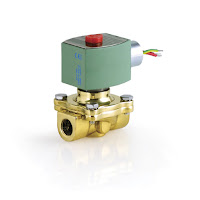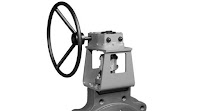Lead is extremely toxic. Tight US safety regulations affect manufacturers of products such as drinking water fountains, reverse osmosis systems, coffee machines. and commercial kitchen equipment. A lead-free system cannot contain soldering flux with greater than 0.2% lead content, or more than a weighted average of 0.25% lead in the wetted surfaces of pipes, pipe fittings, plumbing fittings, and fixtures. Under the law, lead free is a cumulative concept. Let's take an example. A manufacturer who makes dishwashers performs the lead content calculation, averaging all of the models relevant components. A brass valve has 2.5% lead content in the brass parts, well over the 0.25% limit. But the small wetted surface area of the valve is outweighed by the large wetted surface of the stainless steel tank with zero lead content. No design changes are needed to comply with the law.
Considerations for Solenoid Valve Selection
- Brass can have 2.5% lead content, so you must do a calculation to ensure compliance.
- Lead-free brass products are now available.
- Composite and plastic components are lead free.
- Stainless steel is lead free, but it remains expensive.
- NSF approved valves are often the preferred choice and may even be mandated in the future
ASCO Lead-Free Valve Solutions
ASCO Series 212 Composite Valves - These composite valves are designed for use in potable water applications and come with NSF certifications. Installation is made easy through the FasN system, with multiple end connector options. Download the Series 212 Brochure for more information.
ASCO Series 210 Solenoid Valves - ASCO has introduced new lead-free brass solenoid valves to the market that are aimed at providing a safer alternative to standard brass valves. The new products meet the EPA’s Safe Drinking Water Act Section 1417 low lead requirements.
For more information about ASCO products, contact Mead O'Brien. Call them at (800) 892-2769 or visit their website at https://meadobrien.com.









